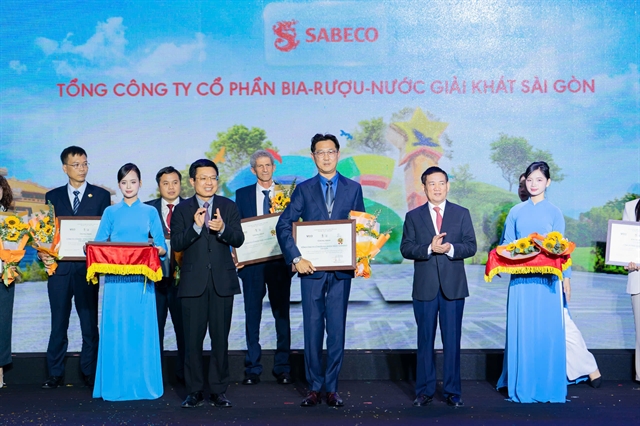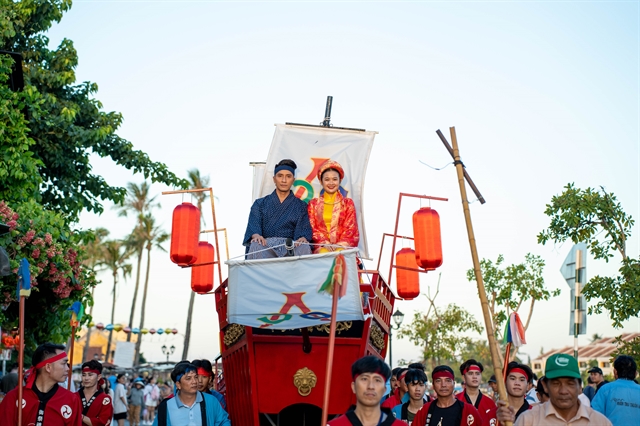 Life & Style
Life & Style

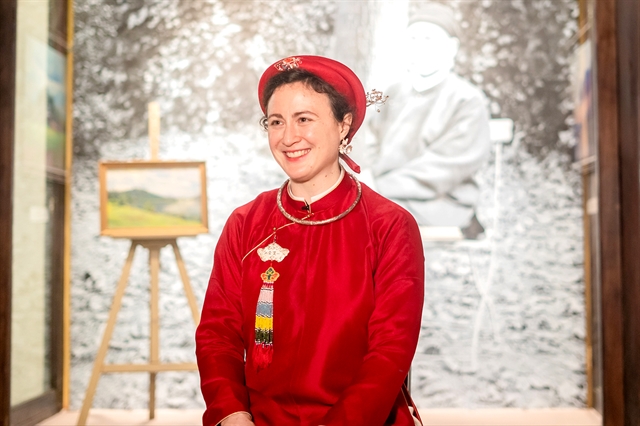
|
| Amandine Dabat, a fifth-generation descendant of King Hàm Nghi |
Amandine Dabat, PhD in art history, is a fifth generation descendant of King Hàm Nghi (1871-1944) who opposed to French colonial rule, and was sent into exile in Algeria by the French. Last year she donated the painting Hillsides in Deli Ibrahim (Algiers) by the king to the Việt Nam Museum of Fine Arts and published the book Hàm Nghi — Empereur en exil, artiste à Alger (Hàm Nghi: Emperor in Exile — Artist in Algiers) in Việt Nam.
Vietnam News Agency's Thể Thao Văn Hóa's culture reporter Ngọc Minh interviewed Dabat about the book and her plans for 2025.
How did you come to write this book?
I began researching him after discovering that his personal archives were preserved by his eldest daughter. This is a collection of about 2,500 documents, including letters, drafts and personal papers of King Hàm Nghi that were kept very carefully by the family.
Immediately after successfully defending my thesis, I thought that these scientific studies needed to be introduced to the public, so I edited the contents to publish it as a book. This is my most important work about King Hàm Nghi.
But this is not the first research on King Hàm Nghi. Have you also consulted other studies about him?
Yes. But during my research, I realised that most of the previous documents were made by the French during the colonial period and they have many errors. These documents only focus on the king's life in Việt Nam without mentioning his exile. Meanwhile, Vietnamese historians do not have access to his personal archives which are essential for understanding his life.
Therefore, if we only rely on French colonial documents, we will only see King Hàm Nghi described as an 'arch-enemy' of France. From his personal documents, I can see that he integrated into the French lifestyle, he had French friends and educated his children in the French style.
And most importantly, I see that he focused on art, not politics. His greatest passion in life is art including painting and sculpture.
My book addresses this historical gap. Based on personal documents of the king and French colonial administrative documents, the book more clearly recreates his life during his exile.
Could you tell more about the depth of research you undertook for the book?
After researching 2,500 documents in King Hàm Nghi's personal archive. I continue to conduct a lot of genealogical research to find descendants of his friends who were given works of art by him to catalogue his paintings and sculptures.
I also research Han Chinese script poems by French female writer Judith Gautier. In addition, there are some documents written by author Kỳ Đồng, a list of books in Han script as well as a few letters from Vietnamese people, which at that time were not yet written in the Vietnamese romanized national language. All of these documents have been translated by Sinologists.
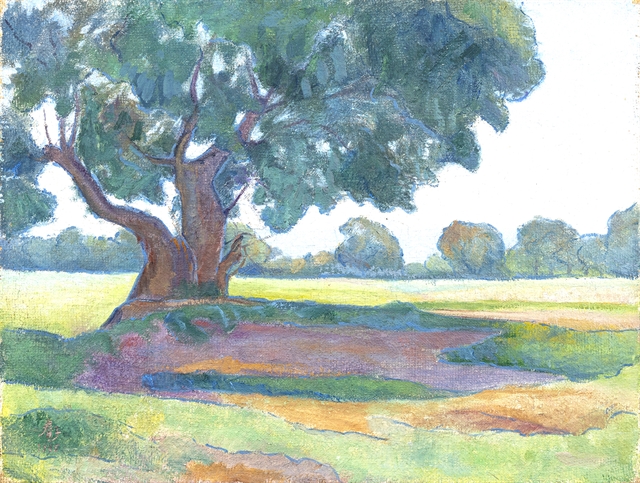
|
| Oil-on canvas painting 'The Ancient Olive Tree' by King Hàm Nghi in 1905. |
In your opinion, how meaningful is the process of researching King Hàm Nghi's artwork in portraying him as an artist?
I think that King Hàm Nghi's artwork proves it. He created paintings and sculptures and was the first Vietnamese modern artist. As an outstanding talent, he conquered and left his mark in all fields of fine arts.
From my research, I think that although he was a talented artist, he was little known in the Vietnamese community at the same time. This can be understood for objective and subjective reasons. Thanks to financial subsidies, he did not have to sell his works to make a living. So throughout his life, he only held three personal exhibitions. Art is a free space that belongs to him.
During his exile in Algiers, he could not have any influence on artistic activities in Việt Nam under the supervision of the French government. However, that could not hinder his interest in the country's art scene.
This can be seen when he visited the exhibition of Mai Trung Thứ and Lê Phổ in Algiers in 1942. At that time, he bought at least one work by Thứ. I think it is a testament to his appreciation and connection to the art scene of his homeland.
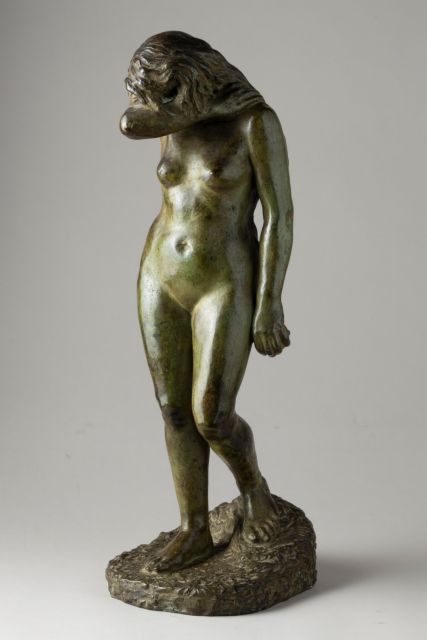
|
| A bronze sculpture by King Hàm Nghi in 1925 |
How did you feel during your research about the king?
I was deeply moved to discover my great-grandfather's personality through his personal letters. When I see his passion for art and his dignity in exile I know that he had to suffer a lot. The resilience he found through art is truly admirable.
For me, it is very important to convey the true portrait of King Hàm Nghi to everyone. My doctoral thesis as well as the book have helped the public better understand his life in exile and his art as well. I think that popularising these studies to the public is also my way of giving back to Vietnamese people a part of the history of their emperor.
Will your next project be bringing King Hàm Nghi's artwork back his homeland?
Yes, definitely. I will organise an exhibition about him in March in Huế City. Hopefully, there will be more exhibitions about King Hàm Nghi to be held in other cities in Việt Nam helping the Vietnamese to get better understanding about him and his art. VNS
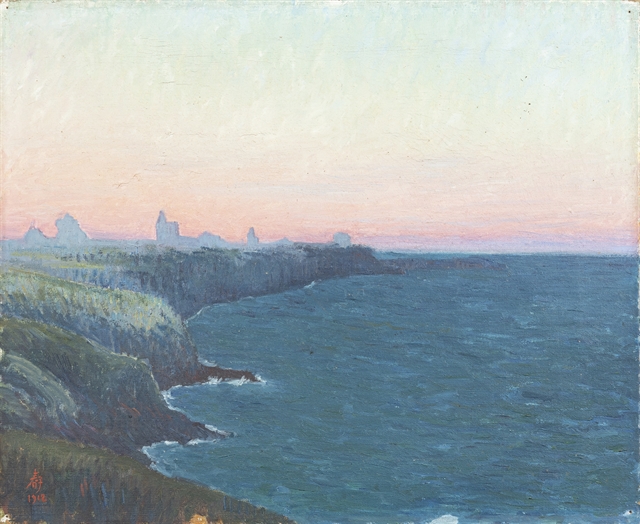
|
| A oil-on canvas by King Hàm Nghi in 1912. Photos courtesy of Amandine Dabat. |


